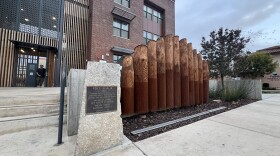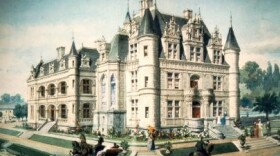It was a building that made a statement about a city on the move. It was striking in its architecture, controversial to some, ahead of its time to others. I'm talking about Fresno's City Hall, but not the current one that many say looks like a spaceship. Today on KVPR's Central Valley Roots the story of an older, but even more influential building, Fresno's City Hall of 1941.
Let's go back to the late 1930s. World War II was on the horizon but America was still stuck in the Great Depression. Art Deco was the dominant architectural style of the day, with buildings like Fresno's new Hall of Records and Memorial Auditorium. So it's hard to underestimate how radical the design for Fresno’s new city hall was at the time.
Located at Fresno and "M" Streets, it was designed by valley architects Charles H. Franklin and Ernest Kump Jr. It was a study in modernity. Some of the shock value in the design might appear cloudy to our present-day eyes, but only because the building was so far ahead of its time. Look at it today and you might guess it was designed in the 50s, 60s, or 70s, not the 1930s.
The building is a long rectangle, two stories tall, clad in glass and thin Roman-style red brick. Long bands of windows face Fresno Street. It’s a classic in the international style. A central glass lobby rises from the center of the structure, and instead of stairs, ramps are used to provide circulation among the building’s different levels.
The design got national attention. In 1944, the Museum of Modern Art in New York City selected Fresno’s City Hall for its exhibition on the most outstanding buildings built in America since the museum's founding in 1932. It served as the center of city government until the current city hall opened in 1992.






